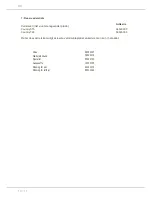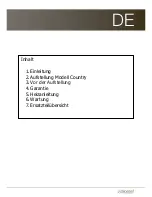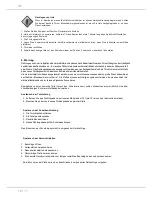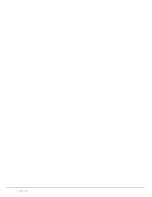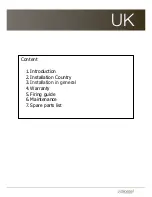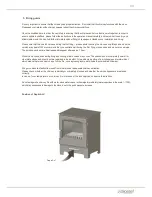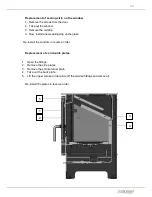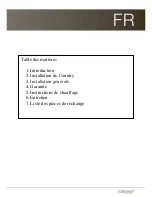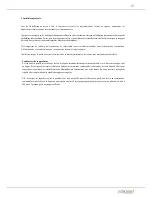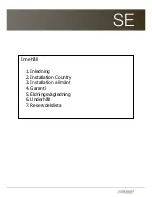
20 / 21
uK
1.
Introduction
Congratulations on your new wood-burning stove. You have probably already installed the stove and fired it for the first
time. Most of us take a first look at the operation manual, when we face a problem
–
especially if we are used to having a
stove. However, we hope that you will take some time to read this operation manual, since the use of a stove may vary
–
and depends on the model type. You need to get acquainted with the stove, before you can feel completely safe
operating it. It is not difficult, but requires a bit of patience. You can find further information about heat, firing with wood,
combustion errors, as well as maint
enance in Jydepejsen’
s Handbook on Installation and Firing.
2.
Installation Country
Wood-burning stoves from Jydepejsen are tested and approved according to the legal regulations of the test facilities. Prior
to the final approval, the stove is examined with numerous firing technical tests. The stove is tested with upward ventilation.
Birch wood with a humidity of 12 - 20% is used.
The Jydepejsen retailer will inform you about the requirements that apply to your specific stove and guide you in terms of
correct installation. Further, the retailer/chimney sweeper can guide you in terms of what chimney type to use. Below, you
can see an illustration of wall and corner installation, with and without an insulated flue tube.
Distance to flammable material
with insulated flue tube
Distance to flammable material without
insulated flue tube
Distance to flammable material
with/without insulated flue tube
450
27
5
85
0
Straight behind - without insulated flues
226
13
4
300
30
0
Corner - without insulated flues
85
0
253
253
Straight behind
- with insulated flues
850
425
22
5
226
13
4
85
0
Corner- with insulated flues
253
270
253
270
Distance to flammable material
with isulated flue tube
Distance to flammable material without
isulated flue tube





